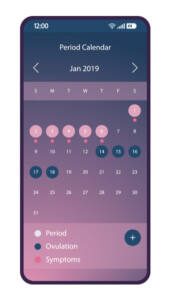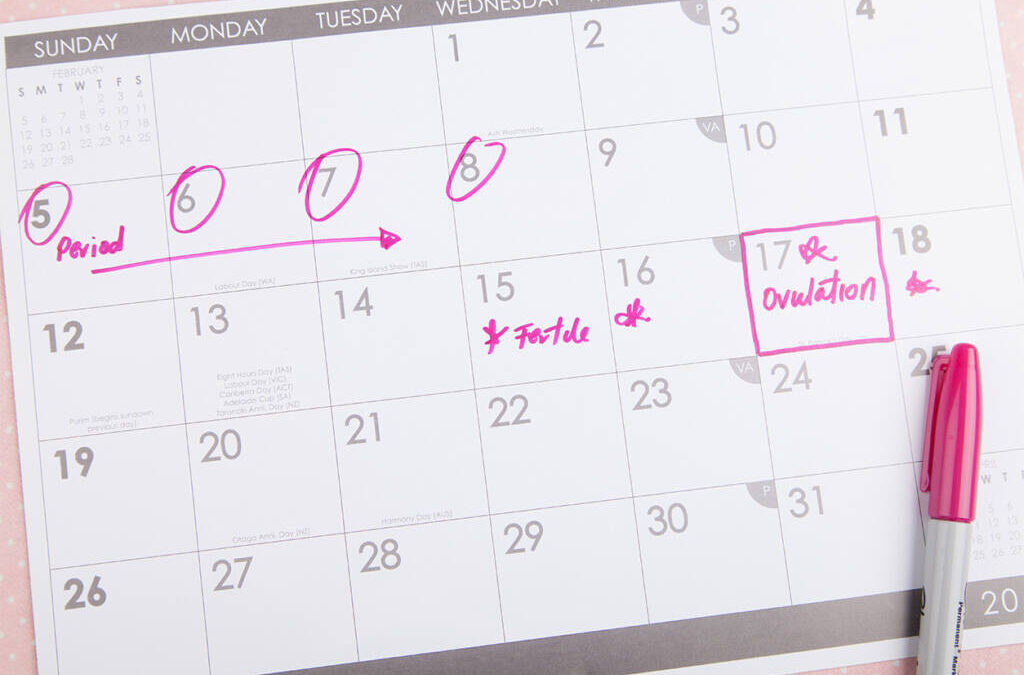What is a Fertility Calendar?
A fertility calendar is a tool for tracking your menstrual cycle so that you can calculate your most fertile days. Also known as an ovulation calendar or ovulation schedule, a calendar can help take some of the guesswork out of trying to get pregnant.
Making the Fertility Calendar
Making and using a fertility calendar is easy. You can download an app on your phone, find a calendar from the internet, or create your own calendar in a notebook. Whatever calendar format fits you best, your task is to fill in the days of your menstrual cycle, indicating when your bleeding starts and stops.
The average length of a menstrual cycle for most women is 28 days. The cycle begins the first day of bleeding and ends the day before your next period.
Key Points to Remember
- A Fertility Calendar can take some of the guesswork out of trying to get pregnant
- Ovulation is when you release an egg and 5 days before is often when you are most fertile
- Keeping track of your period on an app or calendar is easy
- Your most fertile days are usually five days before ovulation as well as the actual day of ovulation.
- Along with a calendar, there are body changes that indicate you might be ovulating
What is an Ovulation Cycle?
Ovulation is the release of an egg from your ovary. This typically happens around 14 days before bleeding begins. This bleeding period is referred to as your period.
Your most fertile days (your best chances for becoming pregnant) are usually five days before ovulation as well as the actual day of ovulation. You are less likely to become pregnant the days just before your period starts and the days during your period.
Once an egg is released, the egg travels down the fallopian tube where it can be fertilized if a sperm is present. If a sperm enters the walls of the egg, an embryo will be created.
Following a Fertility Calendar
 The counting of days of your cycle sounds simple, but it can be tricky to calculate your date of ovulation, especially if your period is not regular which is the case for many women.
The counting of days of your cycle sounds simple, but it can be tricky to calculate your date of ovulation, especially if your period is not regular which is the case for many women.
To figure out your own ovulation schedule, start by calculating the average length of your menstrual cycle.
Step 1: Track your next three menstrual cycles on your calendar. Note your first day of bleeding (this is the start of your period) and count the days in between this start date and the start of your next period (bleeding). After three months of counting, add these three numbers of total days bleeding together and divide by three. This will give you the average length of your menstrual cycles.
For example, let’s say your first cycle lasted 30 days, your second 28, and your third 27. Your average menstrual cycle for the three months would be 28 days.
Step 2: Next, pinpoint your most fertile days. Remember that ovulation happens about 14 days before a period starts. For example, if your average menstrual cycle is 28 days, you will likely be ovulating on day 14. This means that your most fertile days start on Day 9 and continue to Day 14.
How to Use a Fertility Calculator for Pregnancy Planning
Using a fertility calendar can be a great tool for all women–whether you want to conceive or avoid a pregnancy. A fertility calendar can help you determine when you might want to have sex to try to conceive or when you don’t want to have sex if you are trying not to conceive. The calendar can be especially helpful to women who are not on birth control.
There are also body signs that can help you figure out if you are ovulating. Some of the common signs of ovulation include:
- A rise in basal body temperature, typically 1/2 to 1 degree. This can be measured with an oral thermometer.
- Higher levels of luteinizing hormone (LH). This can be measured with a home ovulation kit.
- Your cervical mucus, or vaginal discharge, may appear clearer, thinner, and stretchy. Several days before ovulation, mucus becomes clear and stretchy and resembles egg whites. When this occurs, it’s much easier for sperm to reach the egg.
- Some women experience light spotting.
- You may experience bloating and/or slight pain or cramping in your side.
- You may experience breast tenderness.
Using a fertility calendar is a great first step on a desired path to pregnancy. However, it is important to keep in mind that conceiving can be a complicated and multifaceted process. It can be a physical and an emotional journey. Starting a fertility calendar is also a great time to start evaluating your overall wellness, health habits, and stress factors in your life. A holistic approach to pregnancy can increase your chances of conceiving. Noting exercise, diet, and relaxation habits on your calendar can also be beneficial.
If you have questions about pregnancy or need help identifying if you need fertility assistance, a fertility clinic can help. The mission of Atlantic Reproductive Medicine Center in Raleigh, NC is to provide the highest possible level of personalized fertility care. If you have questions contact us or schedule a preconception counseling appointment with our experts.

